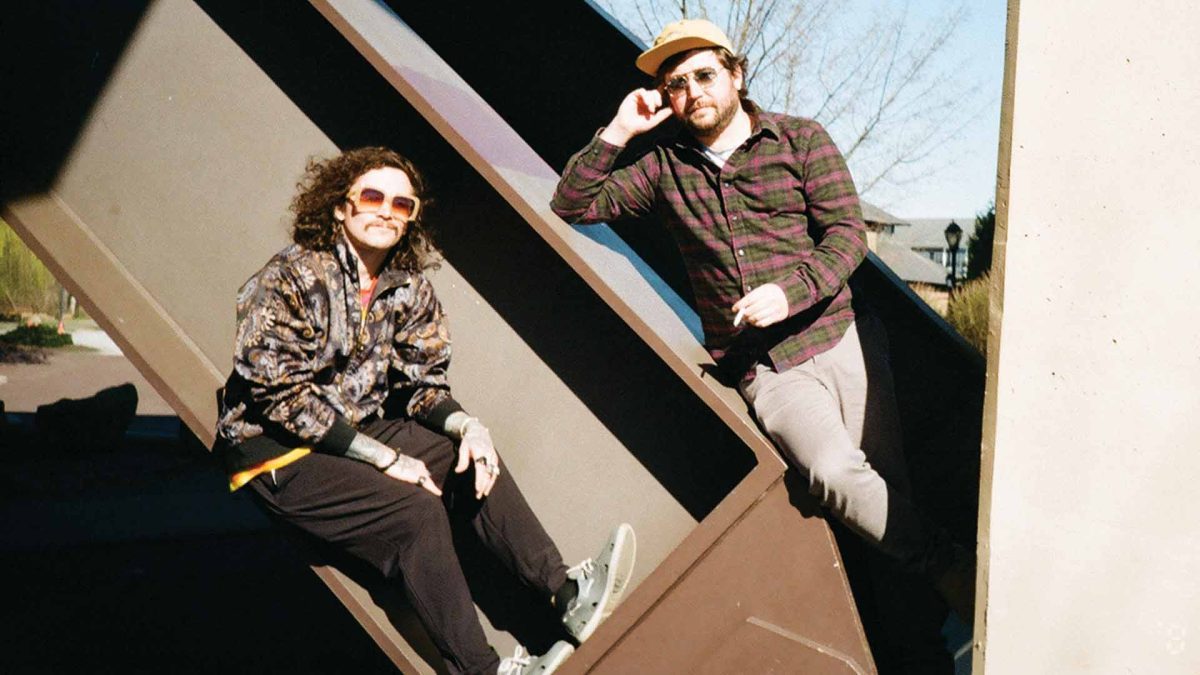by Geno Thackara
You can tell Carbon Mirage is somewhat more visually oriented than your average band, from the name itself to their hand-drawn cover art (one of Ricky Petraglia’s contributions in addition to manning the drums). They may work in the straightforward power-trio format, but there’s no limit to the variety of styles on which they’re willing to draw. The results are picturesque even without any need for unimportant details such as lyrics.
Each member’s background is already more eclectic than many players manage in a career. Petraglia has studied jazz and played with pop groups; guitarist Carey Clayton’s resume includes ambient, hip-hop and folk; bassist James Quinlan is equally at home supporting a classical ensemble, anchoring a Latin group or scoring a short film. “The common factor in Carbon Mirage is that we really want to push different envelopes,” Clayton explains. “We all play in other groups with more fixed stylistic elements, but with Carbon there’s no particular blueprint or mold, which allows for a very broad common ground.”
That’s not to say the music is excessively tricky or hard to follow. They’re likely to work with riffs or familiar verse/chorus patterns as often as they explore unorthodox structures. You can follow the way the players improvise and interact if you’re interested in that particular aspect. If not, you can turn off the brainy side of your mind and just enjoy the feel of whichever song you’re hearing.
Clayton adds that the songs can guide the band as much as vice-versa. “Typically the mood of the songs seem to present themselves over time,” he says. “Rarely have we gone out with a specific vibe in mind, but rather we let it reveal itself as it came to us. As we were jamming on what was to become ‘Pacific’, those soft chord swells just felt like an ocean washing over us, and the vocal melody seemed just to encompass that feeling of basking in an infinite body of water. Most of the time it comes down to listening to what the melodies want.”
More importantly, they’re just as good at listening to each other. Quinlan explains, “I think this group has been a great exercise in finding and using our strengths and challenging our weaknesses. While Carey had brought in most of the structural material for the last two albums, all three of us have different ideas on how to open them up into arrangements and songs. It’s vital to hear and try every idea.”
Even when the building blocks mostly come from one member, what’s important is the way the band combines them into something nobody would have come up with alone. Petraglia adds, “Carey is grounded… I’m more floaty. We all have very different personalities and that comes out of our music. You can’t have three floaty people trying to make music, or three grounded ones. We balance each other out.”
Clayton hints that they’ll be taking the process further with whatever’s coming next: “Since The Peak, we’ve done much more building songs from scratch together, and we’ve also been including more vocals in our music.” The latest single “Castle Grayskull” (out on Bandcamp) gives an early example. “We never pushed for the vocals to happen,” he elaborates. “In fact, the track was finished… There was this opening, a small gap in the music that wanted to be filled. It’s only one word, but it’s a strong moment in the song. As far as singing is concerned, we always keep an open mind. There’s no need to start closing doors… we saw singing as a chance to challenge our weaknesses and it has been turning into a big part of our new songs. We see integrating the voices as another instrument in our soup.”
If this is soup, it has to be gazpacho – an unusual kind with a range of exotic flavors. Philadelphia gets its next chance to have a taste at the Tin Angel on April 22.








